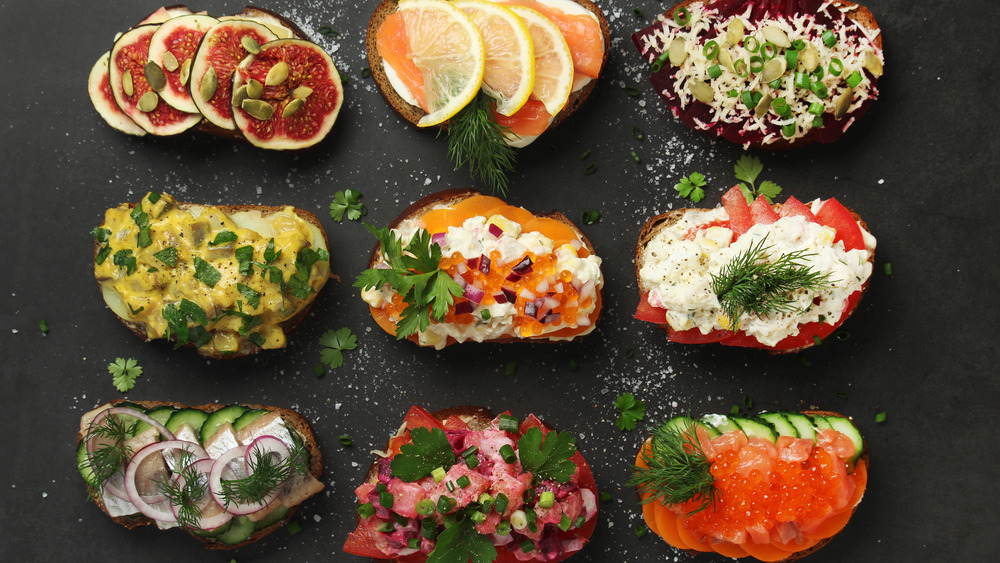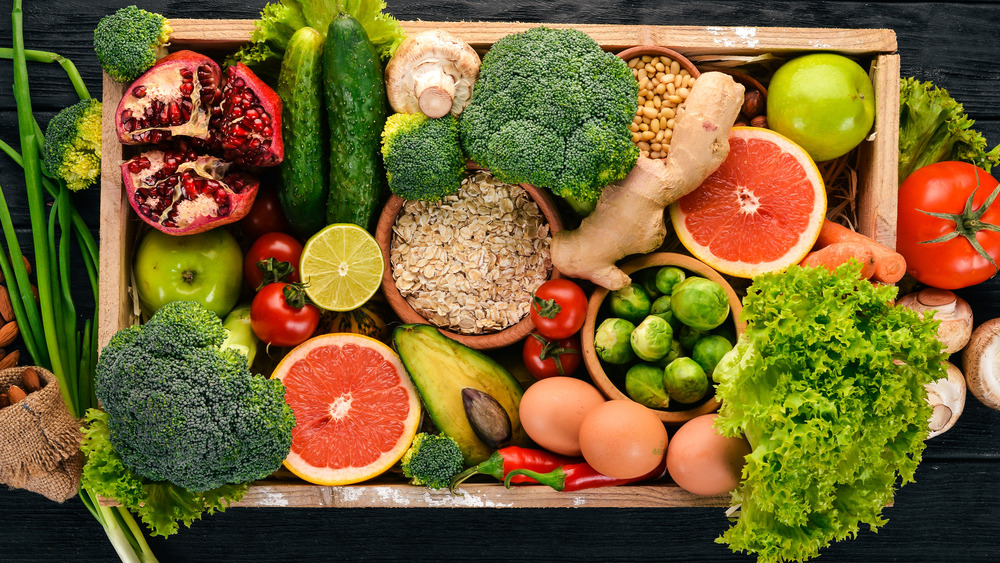What Is The Nordic Diet?
Like the popular Mediterranean diet, the Nordic diet is a healthy way of eating, with a focus on local, sustainable foods readily found in Scandinavian countries. Put in simpler terms, this is a diet that has you eating like a Viking. Similar to the Mediterranean diet, eating a Nordic diet includes eating plenty of fruits and vegetables — with an emphasis on locally sourced, sustainable options like berries native to Finland, Sweden, Iceland, Denmark, and Norway — plus fermented foods, wine, and healthy fats and protein from fish (via NBC News).
The Nordic diet is essentially the northern European version of the Mediterranean diet and was developed officially in 2004, though the style of eating can be traced back much farther than that (via Harvard Health Publishing). Like the Mediterranean diet, it eschews processed foods and added sugars but adds in a sustainability aspect. "It consists of high amounts of nutrient-rich, single foods with vegetables being the cornerstone of this diet, and meats only filling the leftover space," Dr. Luiza Petre, a cardiologist and nutrition expert, told NBC.
This includes locally-grown vegetables like cabbage, broccoli, and peas, while fruit is primarily in the form of berries. The grains that are in the diet are local to Nordic countries and include rye, barley, and oats. Fatty fish, particularly salmon, mackerel, and herring, are staples of the diet, with small amounts of dairy as well. Healthy fats, including canola oil, are also included. The fermented additions to the fiber-rich diet mean that your gut is going to be happy, thanks to the plethora of probiotic-rich foods and the fiber to feed those good gut bacteria (via Men's Health).
Should you try a Nordic diet?
The World Health Organization reported that a Nordic diet reduced the risk of cancer, diabetes, and cardiovascular disease. But rather than following a Nordic diet exactly if you live in a different area of the world, consider taking parts of the Nordic diet approach but adding your own locally grown produce and sustainable seafood rather than using the Nordic list of seasonal fruits and vegetables and local fish.
Instead of debating which pickled herring jar you should order off the internet, prioritize filling your plates with vegetables, looking for seasonal options. You can check the Food and Drug Administration's website to find out what produce is in season, and focus on those options. Use red meat, processed foods, and added sugars sparingly, cook at home more often than you go out to eat, and try to avoid food waste — sustainability is one of the primary pillars of the Nordic diet (via WebMD).


